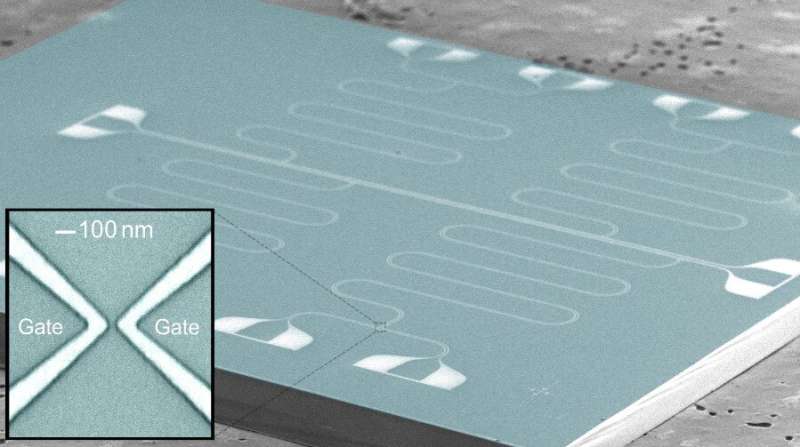Brand new physics of superconducting metals refuted by Lancaster physicists

Lancaster scientists have demonstrated that other physicists' recent "discovery" of the field effect in superconductors is nothing but hot electrons after all.
A team of scientists in the Lancaster Physics Department have found new and compelling evidence that the observation of the field effect in superconducting metals by another group can be explained by a simple mechanism involving the injection of the electrons, without the need for novel physics.
Dr. Sergey Kafanov, who initiated this experiment, said: "Our results unambiguously refute the claim of the electrostatic field effect claimed by the other group. This gets us back on the ground and helps maintain the health of the discipline."
The experimental team also includes Ilia Golokolenov, Andrew Guthrie, Yuri Pashkin and Viktor Tsepelin.
Their work is published in the latest issue of Nature Communications.
When certain metals are cooled to a few degrees above absolute zero, their electrical resistance vanishes—a striking physical phenomenon known as superconductivity. Many metals, including vanadium, which was used in the experiment, are known to exhibit superconductivity at sufficiently low temperatures.
For decades it was thought that the exceptionally low electrical resistance of superconductors should make them practically impervious to static electric fields, owing to the way the charge carriers can easily arrange themselves to compensate for any external field.
It therefore came as a shock to the physics community when a number of recent publications claimed that sufficiently strong electrostatic fields could affect superconductors in nanoscale structures—and attempted to explain this new effect with corresponding new physics. A related effect is well known in semiconductors and underpins the entire semiconductor industry.
The Lancaster team embedded a similar nanoscale device into a microwave cavity, allowing them to study the alleged electrostatic phenomenon at much shorter timescales than previously investigated. At short timescales, the team could see a clear increase in the noise and energy loss in the cavity—the properties strongly associated with the device temperature. They propose that at intense electric fields, high-energy electrons can "jump" into the superconductor, raising the temperature and therefore increasing the dissipation.
This simple phenomenon can concisely explain the origin of the "electrostatic field effect" in nanoscale structures, without any new physics.
More information: Nature Communications (2021). DOI: 10.1038/s41467-021-22998-0
Journal information: Nature Communications
Provided by Lancaster University





















